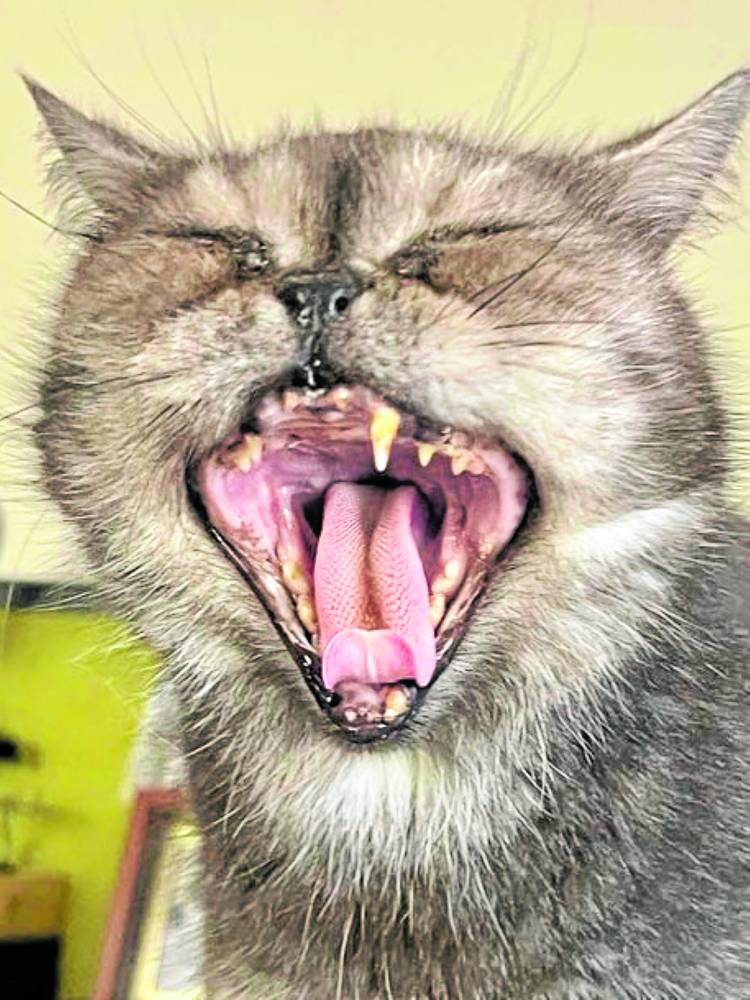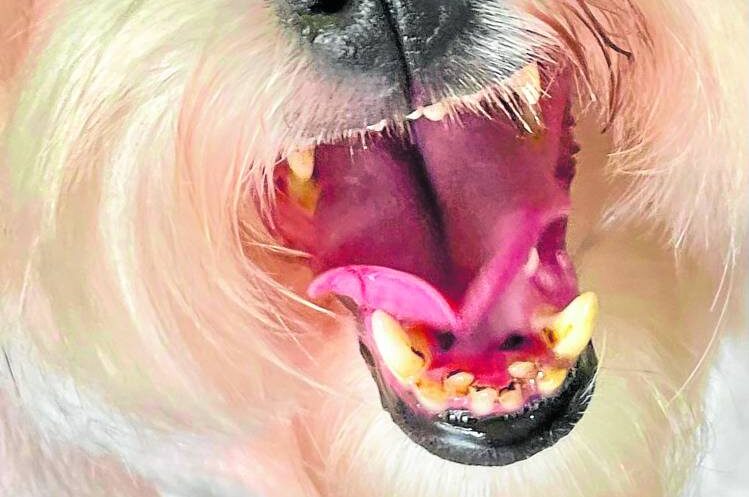
Never in my wildest dreams did I think that I would one day be bringing my dog to the vet for a tooth extraction.
But it actually happened.
Roxy, our oldest furbaby—a dachshund—was probably 10 years old at the time (she’s 15 now, puwera usog). She suddenly grew two small bumps on both sides of her cheeks. We thought nothing of it, assuming that it was a sign of aging.
That was until one bump started to show a puncture, which then oozed with what seemed like pus. Not long after, the other bump followed. We brought her to the vet and we were told that the culprit were two upper molars that had begun to decay. The inflammation manifested on Roxy’s cheeks. The molars needed to be extracted.
Despite being the doting pet parent that I am, I will have to admit that I have shortcomings as well. That includes attending to my dogs’ dental care. Yes, our dogs have toothbrushes but we rarely attended to their teeth because they were extremely resistant and would snarl just at the sight of the toothbrush. They were given Dentastix and bones to chew on anyway, so we thought that should do the job of cleaning their teeth and gums.
Undiagnosed oral diseases
“Ninety-five percent of pets have dental and oral diseases and they are undiagnosed,” said Dr. Ed Unson, cofounder of Animal House Veterinary Hospital. “Pets sleep with their owners and the latter turn a blind eye to the severe bad breath that their pets have.”
Unson, along with other veterinarians, formed the Philippine Dental Veterinary College, an organization that aims to train local vets on how to provide better oral care for pets as well as educate pet owners on dental home care. Their group trained under Dr. James Anthony, a known Canadian veterinary dentist, for eight years.
If your pet has bad breath or halitosis, refuses to eat and salivates excessively, you might want to have his or her mouth checked, those are signs of periodontal disease. A pet can also develop kidney disease or heart disease because of the inflammation and bacteria that’s going around in the mouth.
Taking care of our pets’ teeth and mouth is one of the things that pet owners overlook, according to Unson. “Because, for one, pets don’t like their mouth being touched, so we can’t see what’s inside. If you touch their mouth, they snap or they growl so it becomes a struggle to look at their teeth.”

Dental home care
He recommends starting pets on dental home care at an early age, while they are still puppies or kittens. It’s the same with people, if you don’t start a child early on oral hygiene, he or she will hate it, neglect taking care of his or her teeth and end up with rotten pearly whites.
Pet parents must keep in mind, though, that it takes some time for their furbabies to get used to their mouth being probed. Unson suggests taking it slowly, day by day. “You can start by making them taste the toothpaste first with your finger then reward them right after.”
Don’t use human toothpaste. Pets require enzymatic toothpaste which reduces bacteria, lessens tartar buildup and improves stinky breath but does not require gargling or rinsing. You simply leave it after brushing.
Pet parents need to make cleaning their dog’s or cat’s teeth a happy experience so that your pet will not run away from you when it’s cleaning time. “You need to reward them. It can be a verbal reward like saying ‘good girl’ or ‘good boy’ to make them feel good,” said Unson.
You also need to do it quickly. Brushing their teeth for too long or being too forceful will make them remember it as an unpleasant experience.
Smaller breeds are more prone to plaque formation because of their dentition, or how their teeth are developed and arranged. Giving them dental treats that are supposed to clean the teeth is not the end-all. You still need to regularly brush their teeth.
The way we play with our pets can also cause dental problems. Playing tug may be fun and promote strength but it can be very bad for the teeth. “It can fracture the teeth, it erodes the enamel and can also expose the pulp of the tooth,” said Unson.
Those who weren’t able to start their pets on oral care early need not lose hope—and teeth. While there’s a chance that your pet will be resistant, it also depends on how you work with him or her. It’s all about giving rewards.
For those with older pets, Unson recommends taking your pet to the vet for a dental exam first. “Because older pets most probably have developed gum or oral disease. You want your pet to get a good cleaning and examination so you would know.” INQ









































